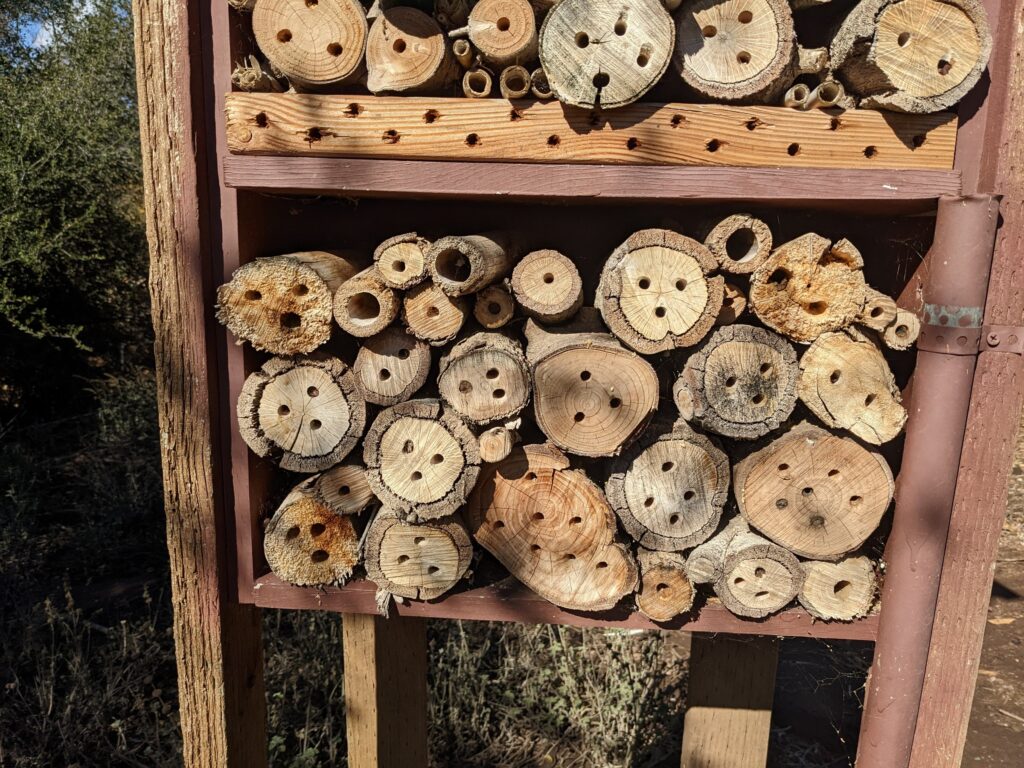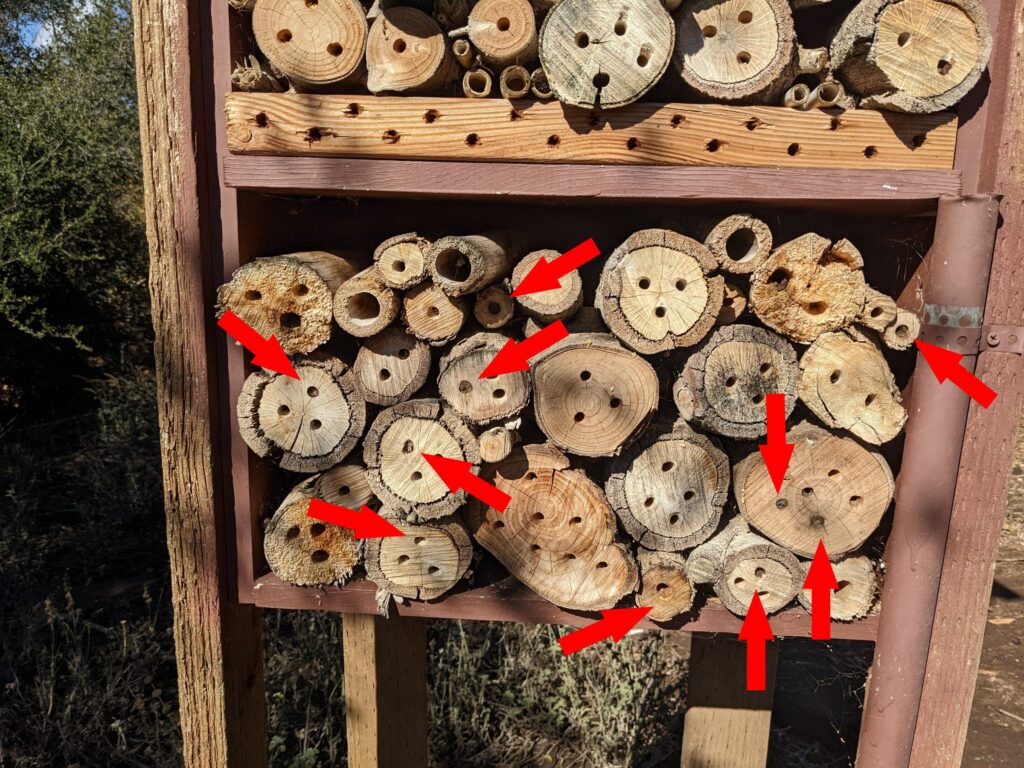A Five Star Bee Hotel
A surprising number of native bees are occupying my bee hotel this fall
I built a bee hotel a couple of years ago, and put it down in a large, weedy area I was turning into a “Caliterranean” (aka California-style Mediterranean) garden. I hoped the combination of flowering native sages and sagebrushes with complementary plants like lavender and rosemary would draw some of the local pollinators and they’d stick around once they found the hotel. A sort of “come for the food, stay for the shelter” deal.
I wasn’t expecting much from the bee hotel because most every comment I’d read from others was that their hotels didn’t draw bees, just spiders. About six months later I did spot a carpenter bee checking out the digs, but I never saw any more activity after that.
The following year was against me. A series of plagues – cold, heavy rain followed by scorching heat and drought, gophers, ground squirrels, and assorted backyard poultry – ended up destroying all but a few of the plants. Then an invasion of horehound (tastes good, but a terrible weed) overran what was left, and I abandoned the garden to nature.
Until a couple of days ago.
We had our first good storm of the season earlier in the week, so I was checking the lower yard to make sure nothing had blown over, tumbled into the oak valley, been encased in mud and runoff, etc. I came upon the bee hotel, which was still standing and looking no worse for wear.
Spotting the occupied “rooms”
I saw a couple of holes in an oak log on the lower shelf were sealed up with little mud doors – a sure sign of mason bees, who, in the fall, lay eggs in the holes, pack them in with pollen and seal the chamber with mud. Over the winter the eggs hatch and the baby bees eat the pollen and mature inside their cocoon. In the spring the young bees drill through the mud door and fly away.


Use the slider handle to reveal where the bees are sleeping
Even more interesting was that I could identify about a half dozen or so holes with little mud doors that had been drilled out the previous spring, meaning, native bees were actually finding and using the bee hotel year in and out. Mason bees are solitary, so it’s really cool to find so many are finding and taking up residence at Hotel de Sage (it must be a five star hotel!).
Successful Bee Hotel Tips
I did notice that the native bees in general prefer to make their nests wood rather than the hollow reeds. Carpenter bees seem to like the soft woods like pine and agave, while the mason bees choose oak logs exclusively. So if you’re building a bee hotel, or you’re wondering why yours doesn’t draw bees, your wood log selection is something to keep in mind.
If you’re interested in how I built my bee hotel, check out my “Build a Bee Hotel” post. It has the general guidelines for bee hotel basics as well as a little background on the types of native bees they can bring to your yard.








